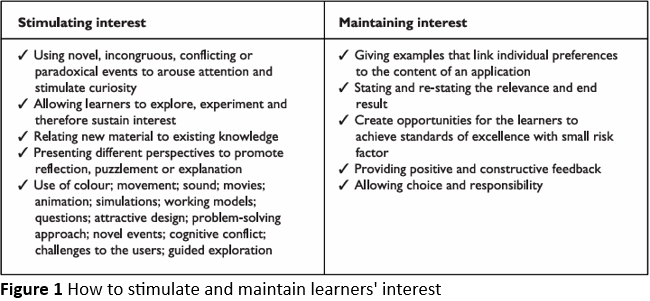
Social skills
 المؤلف:
John Cornwall and Sue Soan
المؤلف:
John Cornwall and Sue Soan
 المصدر:
Additional Educational Needs
المصدر:
Additional Educational Needs
 الجزء والصفحة:
P89-C6
الجزء والصفحة:
P89-C6
 2025-04-09
2025-04-09
 743
743
Social skills
Social skills are defined as specific strategies used by an individual to perform a social task effectively and thus be judged socially competent. They can be split into two categories:
■ environmental social skills: These are skills that are essential to perform tasks in both an educational setting and the workplace, such as listening, following instructions, appropriate work habits etc.
■ Social interaction skills: These are skills that facilitate any positive social interaction, such as starting and maintaining a conversation, complimenting others, resolving conflict, etc.
Learners with SEBD in school are delayed in their personal, social and emotional development, and this may be for a variety of reasons. They may have been deprived of satisfactory adult models or may not have been given sufficient opportunity to learn from those around them or from their surroundings. However, this social immaturity, although developmental, is not necessarily something that cannot be compensated for or accelerated by an appropriate social and emotional environment both at home and at school.

When considering involving inter-agency working it is also important for educators to remember that although a learner’s home environment may be challenging at times, if it is generally secure and loving, then it is likely to go further to solving a learner’s problem than a school environment can. Cornwall and Tod (1998) clearly explain how lack of early guidance can affect a learner’s opportunities when entering school.
Similar strategies are applied to enable their child to develop social skills needed for school. Their child is encouraged to play with same age peers and social behaviors such as listening, turn taking, sharing, etc. are made explicit and rewarded ‘Here’s some sweets – give one to Martyn and one to Peter – good boy, for sharing.’ These behaviors are developed in a supportive safe setting for the child so that the chances of success are maximized. The important point to note is that these behaviors are explicitly taught and learned during the years prior to school entry. If a child does not have these experiences, and arrives in school without the appropriate ‘learning behaviors’ then he/she will not only make slower academic progress and have more peer-related problems but will have to acquire these behaviors in a group setting where failure is public. For some children this ‘developmental delay and/or impairment’ can be addressed in school by using an available adult and selected peers to recreate home-type situations as described above so that the necessary behaviors can be developed initially in a safe setting. Children seek to make sense of their environment and protect themselves from further failure and rejection. To do this they develop particular ways of thinking and behaving, e.g.:
■ If not given sufficient attention from a parent during the early years, they may constantly seek attention even if it results in an uncomfortable experience, i.e. being shouted at or smacked.
■ If they are not allowed to succeed, they may decide not to attempt to do anything in case they fail.
■ They may adopt a style of thinking, i.e. ‘everyone hates me’ to protect themselves from rejection and then behave in such a way as to confirm that their belief is correct.
■ They may believe that they are the cause of events (i.e. they caused their parents to split up, etc., they are too ‘thick’ to be able to do schoolwork). If they believe that they cannot change events, then they stop trying to change, but carry with them the burden of guilt and failure.
Discussion
Discuss learners you have taught that would fall into one of the categories mentioned above. How did the educators at the school support the learners? Do you consider the learners problems were really solved? If yes, how was this achieved? If no, why?
In essence, the learners having difficulties at school may simply not have the appropriate behaviors in their repertoire, in which case some behavioral approaches aimed at building up and rewarding new skills may fulfil the need and be successful. However, if the learner has made an active ‘adjustment’ to his individual circumstances and the consequent behavior serves a purpose, then simply trying to change that behavior without reference to the function will not achieve the desired result.
For example, a learner avoids starting work (so that he cannot fail) by chatting with peers. This learner could be ‘stopped’ from chatting, but the fact that the chatting has stopped does not allow him to lose his fear of failure. He would in fact probably develop another behavior that serves to protect him from revealing his difficulty with his work.
Educators have an important role, therefore, when deciding which problem-solving techniques to use, whether the learner ‘can’t’ or ‘won’t’ behave and will have to adjust strategies accordingly.
Thus, this kind of behavior, leads to a lack of knowledge, skills and understanding in the social and inter-personal domain. This means that a learner in school cannot elicit the help, support, sympathy or even guidance that he or she needs and this can mean that he or she responds inappropriately to the questions and intentions of others. Misinterpreting the actions and words of others can lead to negative reactions from them or confusion and there will be an ensuing loss of self-esteem. How many times have you as an educator been involved in sorting out a problem which is basically a learner misinterpreting what another learner has meant?
 الاكثر قراءة في Teaching Strategies
الاكثر قراءة في Teaching Strategies
 اخر الاخبار
اخر الاخبار
اخبار العتبة العباسية المقدسة


